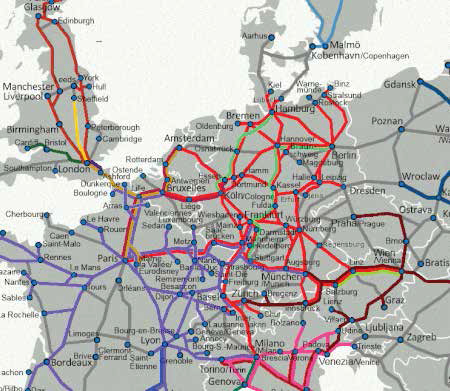For many people, crossing national borders by land may not be an interesting story at all. However, for people from some countries, such as The Republic of Korea (often known as South Korea), crossing a border by train is an unusual experience.
South Korea is country where there are no “proper” land borders. To be specific, there are no borders that can be crossed legally by land. The country is surrounded by the ocean to the west, south, and east. To the north, South Korea shares a land border with North Korea (officially known as the Democratic People’s Republic of Korea).
Since the South Korean government does not recognize the North as an official nation, there is the Military Demarcation Line and the Demilitarized Zone instead of an official national border. Therefore, crossing the border is illegal for most occasions. Of course, crossing the border via railway is impossible. Due to this situation, airplanes and ships are the only options when travelling abroad from South Korea. The UOS Times travelled to Europe last winter and was able to have the uncommon experience of crossing borders by railway, twice.
The first time was when we travelled from Brussels Central Station in Belgium to Frankfurt (Main) Hauptbahnhof (Central Station) in Germany using the ICE (Intercity ? Express) via Liege, Aachen, and Cologne. The ICE is a similar railway system to the KTX (Korea Train eXpress) in South Korea. The journey took about three hours to travel a distance of 317km. Our second time crossing a land border was when we travelled from Heidelberg Hauptbahnhof, Germany to Gare de l’Est in Paris, France. This time The UOS Times first used the S-Bahn, the local wide area urban railway system, from Heidelberg to Manheim, where we transferred to the ICE, which headed to Paris via Saarbruken and Metz. This journey took about three hours and 40 minutes to travel a distance of 465km. For comparison, the distance between Seoul and Busan is about 325km.

After using the ICE to travel across national borders twice, there were two features that gave us strong impressions. One interesting feature was that there was a dining compartment within the train. In South Korea, there are no dining cars attached to the trains no matter the type of train or how far it goes. Usually, the only chance to buy food inside a train is from a food cart that passes by and sells simple snacks and drinks. Dining cars existed in the South Korean railway system until the 1990s. The ICE, in contrast, has dining cars that sell not only some snacks and drinks but also proper meals.
Another feature is that there was nearly no inspection when crossing the borders. Usually, when you travel to another country, for example, by air, you have to go through a strict immigration inspection at the airport. However, we did not face inspection while we were at the train station or somewhere near the borders. The French border police did a simple check inside the train for few minutes when we crossed the German/French border. This might be because all three countries- Germany, France, and Belgium -are a part of the European Union (EU) and might not be the case when traveling outside the EU.
Traveling internationally by railway is not a possible option for most people in South Korea, for now. Therefore, crossing national borders by train was a somewhat special experience. Besides the international train trip being a rare experience, the journey itself was pretty satisfactory. If the unification of Korea is actualized, traveling by railway will be a great option.
Shin Gi-sung
sgsparthia97@uos.ac.kr

